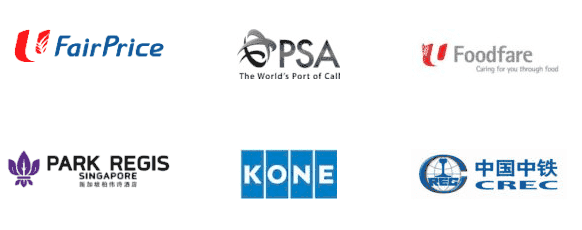As Singaporeans, we are all familiar with the Goods and Services Tax (GST). Any news pertaining to a rise in GST rate is often met with increased scrutiny, as everyone hopes to avoid paying a higher tax when they are out shopping.
But it is not just consumers who have to pay for GST. Businesses that work with GST-registered suppliers also face this dilemma. In such cases, some entrepreneurs will choose to register their companies for GST so that they can recoup the GST amount they have to pay their suppliers.
If you are a business owner considering this strategy, let us share what you need to know about the process and how you can register your company for GST.
Which company needs to be GST-registered?
Companies that are GST-registered fall into two categories – compulsory and voluntary. It is vital to note that businesses are responsible for continuously accessing their need to be registered for this tax. Any company that meets the following two criteria has to proceed with the registration process.
Criteria for compulsory registration:
1. Retrospective basis: The company’s turnover exceeds SGD$1 million in the last 12 months.
2. Prospective basis: The company’s turnover is expected to exceed SGD$1 million in the next 12 months.
If you find your business fulfilling either criterion, you are required to submit your GST application to the Inland Revenue Authority of Singapore (IRAS) within 30 days. Failure to comply will lead to your company incurring penalties.
Criteria for voluntary registration
Even if your business does not qualify for mandatory GST registration, you can still do so voluntarily, depending on the nature of your operations. However, you must have or plan to have taxable supplies in Singapore.
Additionally, there are a few conditions your business has to adhere to:
1. After the registration process is completed, your business has to remain a GST-registered company for a minimum of 2 years and comply with the GST regulations;
2. GST returns need to be promptly filed every quarter, and all records must be maintained for a minimum of 5 years;
3. Your business has to use GIRO for any refund or payment of GST;
4. Your business must provide taxable supplies within 2 years of the registration process if it has not done so already.
5. Compliance with any other conditions that IRAS may impose.
Exemption from GST Registration
However, some companies are exempted from GST registration even if their taxable turnover rate surpasses the stipulated limits. If your company specialises in zero-rated supplies (i.e. exporting goods and services), it is exempted.
Alternatively, if more than 90% of your company’s taxable supplies are zero-rated and its input tax is greater than its output tax, it is also exempted from GST registration.
How to register your company for GST?
Your application for GST submission must be submitted online through the myTaxPortal. Additionally, you will have to procure a GIRO application form from IRAS’s website and fill up the document with the necessary details before mailing the original copy to IRAS.
If the application is voluntary, the company directors, partners, trustees, or its sole owner must undergo two mandatory E-learning courses and pass the respective tests. Once this process is completed, you can proceed with your application.
Once your application is successful, you will receive a document from IRAS stating the effective date of your business’s GST registration and the company’s GST registration number.
What do you need to do after your company is registered?
After your registration is successful, your company must fulfil several obligations, which will be stated in the approval letter you receive. These duties include:
1. Charging and accounting for GST for your products and services
Once you are notified of the effective date of your business’s GST registration, you will have to include the 7% GST rate for all your products and services that are supplied in Singapore.
2. Filing your GST returns
Your company’s GST returns must be accurately filed within a month from the end of every accounting period. During the filing process, you will have to include your input tax (GST payment to suppliers) and output tax (GST acquired from customers). If your output tax is greater than the input tax, you are required to pay the difference to IRAS. Conversely, you will receive a refund from the statutory board if the reverse were to occur.
3. Payment of GST within a stipulated timeframe
Any payment of GST has to be completed within 1 month from the end of every accounting period. Failure to comply will result in the government taking action and imposing heavy penalties on your company.
4. Maintaining your accounting and business records for a minimum of 5 years
Your accounting and business records must be maintained and kept in storage for at least 5 years. If there are any changes to the business’s circumstances, such as a change in ownership or GST mailing address, you will have to update IRAS within 30 days from the change.
5. Displaying prices with GST
The prices of your company’s products and services, whether they are displayed via advertisements, quotations, or publications, must include the GST. Your business may incur a fine of up to SGD$5000 for any non-compliance. However, if your company is in the F&B or hotel industry, it is exempted from this rule.
6. Your tax invoices must indicate your company’s GST registration number
A tax invoice must be issued for any standard rated supplies provided by the business, and the document must include your company’s GST registration number.
Conclusion
While GST registration is mandatory for a company once it has fulfilled specific criteria (with a few exceptions), there are various benefits that entrepreneurs can enjoy as a GST-registered business.
However, if your company does not meet the criteria, you can still opt to do so voluntarily. But business owners need to be aware of the obligations they have to fulfil once their registration is successful, as failure to comply can result in heavy penalties.
If your business is a GST-registered company, you might want to consider outsourcing your tax-related accounting needs to a specialised firm. At Ackenting Group, we provide an extensive selection of reliable tax and accounting services that you can tailor to your business’s specific needs. Our experienced accountants have handled multiple clients from various industries, so they are well-equipped to assist you with filing your company’s GST return and ensuring they comply with IRAS regulations. In fact, outsourcing your non-essential services is an excellent way to grow your business.
If you require any assistance on accounting services, feel free to drop us an email at johnwoo@ag-singapore.com or contact us at +65-66358767. At Ackenting Group, we offer a complimentary 30 minutes online consultation for us to better understand your business requirements.














